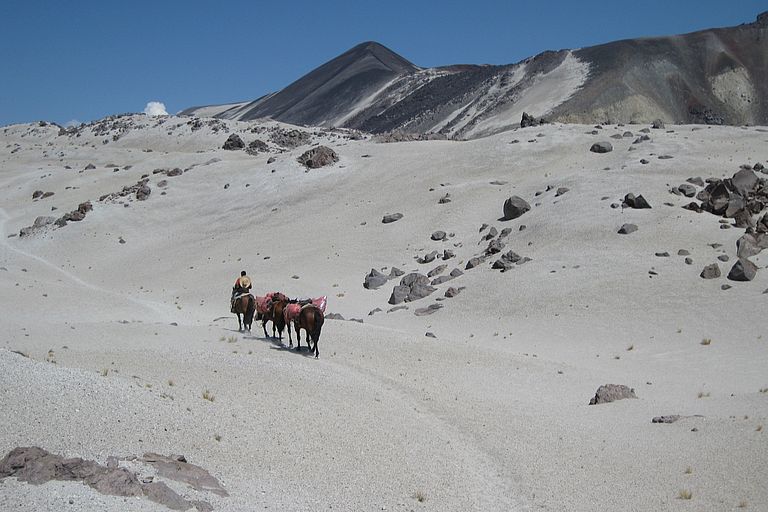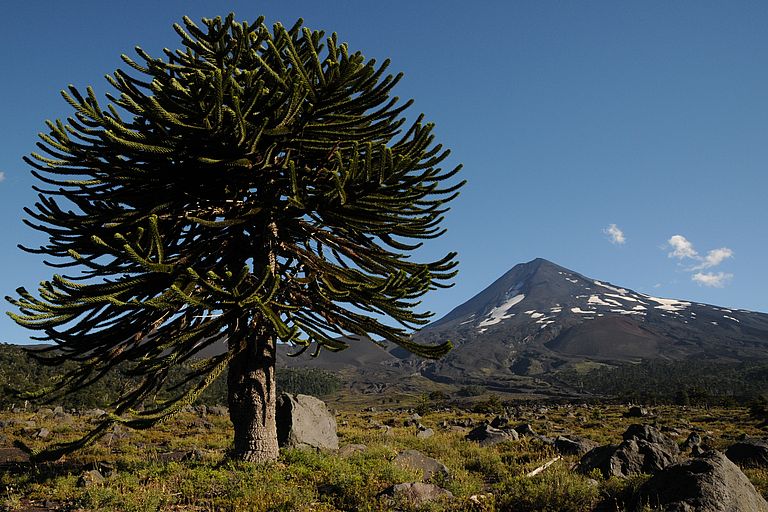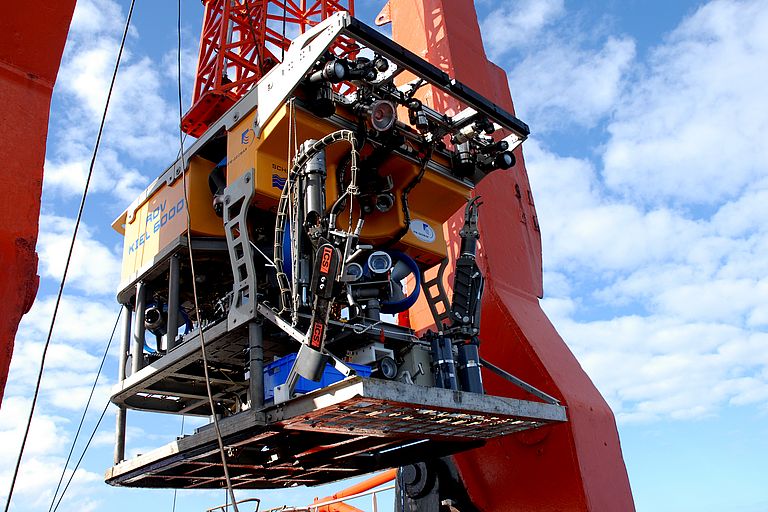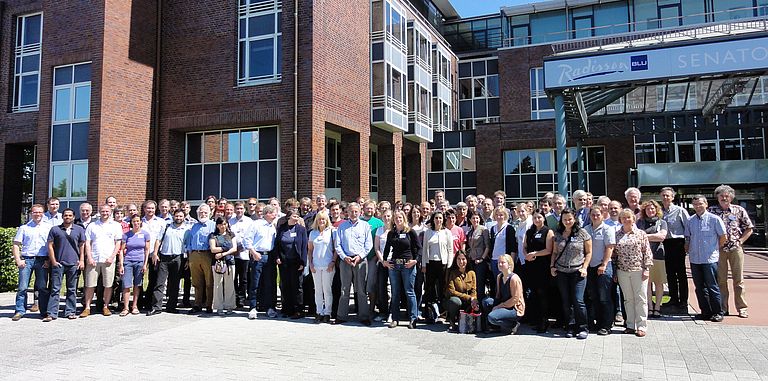How does the Earth’s material recycling work?
The Kiel Collaborative Research Center 574 ends after eleven years
Joint press release of Christian-Albrechts-Universität zu Kiel and
GEOMAR I Helmholtz Centre for Ocean Research Kiel
How do volcanic eruptions influence the global climate? What conclusions about upcoming eruptions and earthquakes can be drawn from gases escaping from volcanoes? What pathways do volatiles and fluids take in the subduction zone – the area, where an oceanic plate sinks beneath a continent? From 2001 to 2012, more than 100 scientists investigated the subduction zones of Central and South America with different research foci. The German research foundation Deutsche Forschungsgemeinschaft (DFG) supported the work of the Collaborative Research Center (SFB) 574 “Volatiles and Fluids in Subduction Zones: Climate Feedback and Trigger Mechanisms for Natural Disasters” with more than 20 million Euro. Nine large seagoing and more than 50 land expeditions were carried out during the project by Christian-Albrechts-Universität zu Kiel (CAU) and GEOMAR | Helmholtz Centre for Ocean Research. During marine expeditions, samples were recovered from the seafloor at depths of up to 6000 metres below sea level with a remotely operated vehicle (ROV). On land expeditions using horses and helicopters in the high Andes, volcanoes at elevations of up to 6000 metres were investigated.
“There are three different types of subduction zones“, Professor Kaj Hoernle, chair of the SFB at GEOMAR, explains. “We concentrated on the continental type, where an oceanic plate subducts beneath a continental one.” The SFB scientists focused on two regions: Central America between Guatemala and Costa Rica, and southern Chile and Argentina. Significant differences between these areas include the thickness of the overriding continental plate, the angle and composition of the subducting plate and the processes occurring in the forearc – the region between the deep sea trench and the active volcanic arc.
Fluids and volatiles in subduction zones have an important influence on natural hazards, such as earthquakes and volcanic eruptions that threaten people living in coastal areas. Scientists in the SFB found a close connection between the end of fluid release from the subducting sediments and the beginning of megathrust earthquake activity. In Costa Rica, a newly discovered form of earthquake was recorded, which is believed to represent fluid release events from the subducting plate. Using magnetotellurics, a Junior Research Group imaged areas with fluids deep in the subduction zone, allowing for a better understanding of fluids in subduction zones.
By recording seismic waves, the Kiel scientists visualised the underground magma pathways of some of the most active volcanoes in Central and Southern America. They also studied volcanic gases trapped within minerals in tephras, explosively erupted fragments of volcanic material. Those gas analyses facilitate to reconstruct the triggers for former eruptions – a basis for predictions for the future. A network of instruments was also set up to determine the current gas emissions from active volcanoes. “These data are being used by local geological agencies as part of their early warning systems for volcanic eruptions”, Hoernle explains. “There might also be a link between the volcanic gas release and earthquake occurrence. Our ongoing research will help us to understand how these processes interact.
Measurements at the seafloor and the analysis of samples provide insight into the cycles of fluids and volatiles such as water, sulphur, chlorine and carbon dioxide in the frontal (forearc) part of the subduction zone. The remotely-operated vehicle ROV KIEL 6000 was used to explore gas venting for example of methane and related biological communities of bacteria, worms and mussels living at the vents. New species were discovered at some of the vent sites.
Gases emitted during explosive subduction zone volcanism are often transported into stratospheric heights, where they can destroy ozone, modify radiation intensities to the Earth's surface, thus potentially affecting global climate. It was shown that many of the largest eruptions in Central America released enough bromine and chlorine into the atmosphere to have caused ozone holes in the past, indicating the potential impact of future large eruptions from subduction zones. Combining SFB data with literature on eruptions from around the Pacific Ring of Fire, it was found that climate, in turn, can also affect volcanic eruptions. When the temperature rises and glaciers melt, the rise in sea level can lead to enhanced explosive volcanic activity. This, of course, poses the question as to whether global change may not also result in elevated volcanic and even tectonic activity.
Although the SFB 574 focused on answering fundamental scientific questions, the local population benefitted directly from some of the results and from instrumentation installed by the SFB – for example in the early detection of natural hazards. The scientific community appreciated the many multidisciplinary studies carried out in the project. Two of three publications of SFB 574 – of 250 in total – are joint papers of colleagues from different research fields. “To figure out a common scientific plan was a challenge for many of us”, Hoernle says. “In addition, we also communicated our results to students in a very successful outreach programme.”
The end of SFB 574 does not mean that the work is finished. “In upcoming projects, we would like to investigate questions that were not fully answered and find solutions to new questions that have arisen from the SFB research”, Hoernle states. “But I am sure that our planet will keep many of its secrets…”
Links:
https://sfb574.geomar.de The Kiel Collaborative Research Center (SFB) 574
https://sfb-outreach.geomar.de The outreach website of SFB 574 and SFB 754
Contact:
Maike Nicolai (GEOMAR, Communication & Media), Tel.: +49 (0)431 600-2807, mnicolai(at)geomar.de
Dr. Boris Pawlowski, press officer of Christian-Albrechts-Universität zu Kiel, Tel. +49(0)431 880-3004, bpawlowski(at)uv.uni-kiel.de






